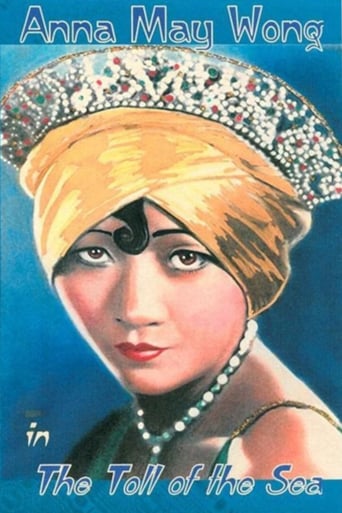John Seal
Yes, this is a beautiful and beautifully shot film, worth celebrating both for its two-strip Technicolor process and the presence of Anna May Wong, but let's not overlook poor old Kenneth Harlan as cad Allen Carver. Carver is the white man who marries poor little Lotus Flower (Wong), gets her pregnant, and then dumps her as soon as two of his 'friends' convince him a white man can't be married to an Asian woman. Carver rolls over with ridiculous ease and flees to America, where he commits bigamy by wedding saintly Barbara (Beatrice Bentley). The two return to China, where Lotus Flower and baby Allen Junior (Priscilla Moran, still alive as I write this and perhaps the repository of some good Hollywood stories) have been waiting for pops to return. Tragedy ensues, but not before Harlan conveys the impression that Carver is the most abject, miserable, no good heel ever to walk the Earth. The man has a million ways to look morose and consumed by guilt, but he just can't bring himself to do the right thing. It's not a subtle performance, but it is a memorable one!
hte-trasme
This film is, of course, memorable for its historic place as the first widely released film to be produced in color, albeit using a two-tone process that detected only red and green. It's indeed a visually beautiful film, with costumes and settings deliberately chosen to show off the pleasant colors that the new process could represent. Unfortunately I felt that the film itself just wasn't very good. In fact, it's probably best as a definition of "overwrought." Good melodrama has to keep the audiences illusions about the importance of what is going on intact; "The Toll of the Sea" frequently becomes laughable.The film is far too preoccupied with its own title cards: they are grandiloquent frequent, and frequently absurd or condescending. What is worse, major plot points, instead of being actually, filmed, are usually transmitted via title card. That's how we're let in on trivial details such as Elsie convincing Allan to say goodbye to Lotus Flower or Lotus Flower's son being born. That leaves the scenes that are actually filmed to consist mainly of characters (usually Lotus Flower) standing and emoting for long periods. I'm sure Anna May Wong is a good actress, but she's not given much of a chance to act here rather than to look sad for long periods. It's not good drama. I'm afraid the only thing to recommend this is, literally, the pretty colors.
st-shot
It's slow going in this Puccini Opera rip off that nevertheless is worth a look for it's early example of the Technicolor process. The film plods along at a mostly gloomy pace as the camera looks for any reason to display color. From costumes to pheasants, gardens to elaborate Chinese interiors we are offered a full range of lush colorful imagery.Without the music Madame Butterfly can be trying but Anna May Wong as Lotus Flower gives a delicately touching performance being lurched back and forth between joy and tragedy. Her silent emoting in colorful costume makes for a beautiful visual poem. Kenneth Harlan as the bigamist has the Arrow man look and his American wife played by Beatrice Bentley evokes Gibson Girl remaining mostly in profile as if posing for the period calender.Lethargic pace and glum plot aside, Toll of the Sea's colorful historical significance and Ms. Wong's tender performance deserves a look.
Snow Leopard
This movie would be interesting historically if for no other reason than to see its pioneering use of the two-strip Technicolor, which still looks good over 80 years later. It's also well worth seeing to watch Anna May Wong in an early starring role, when she was still a teenager.The story takes the "Madame Butterfly" plot and changes it slightly, setting it in China and adding some emphasis on the role of the sea. The story is simple, yet potentially packed with emotion, with its themes of clash between cultures and broken promises in relationships. Much of this particular production seems understandably to have been devoted to ways of showing off the potential of its new color process, and as a result there are times when the visual is emphasized over the dramatic potential.Wong, as you would expect, is quite good in her role. She looks quite young, with plenty of youthful innocence instead of the full degree of elegance that characterized her later roles. But she already had the ability to use the smallest of expressions and gestures to express her character's emotions economically and convincingly.The rest of the production (other than Wong and the color process) is merely solid for the time. Kenneth Harlan rarely shows much energy as Carver, although fortunately it often works positively in bringing out his character's spineless nature.The basic story makes some powerful statements about relationships and cultures, and thanks to Wong, much of that comes through. It does miss a few opportunities, but it hits more than it misses, and the combination of Wong plus the chance to see what early Technicolor looked like is more than enough to recommend "The Toll of the Sea" to any silent movie fan.



